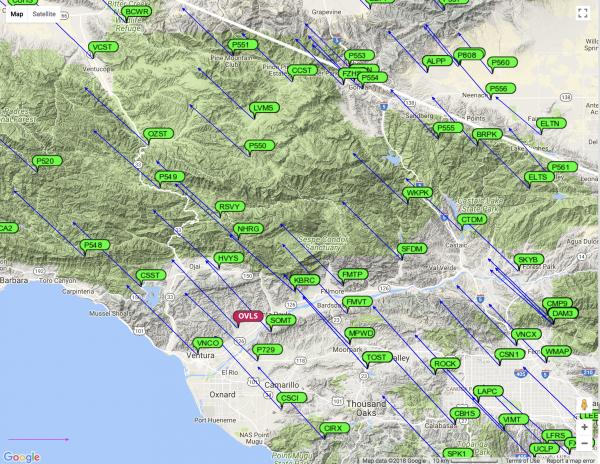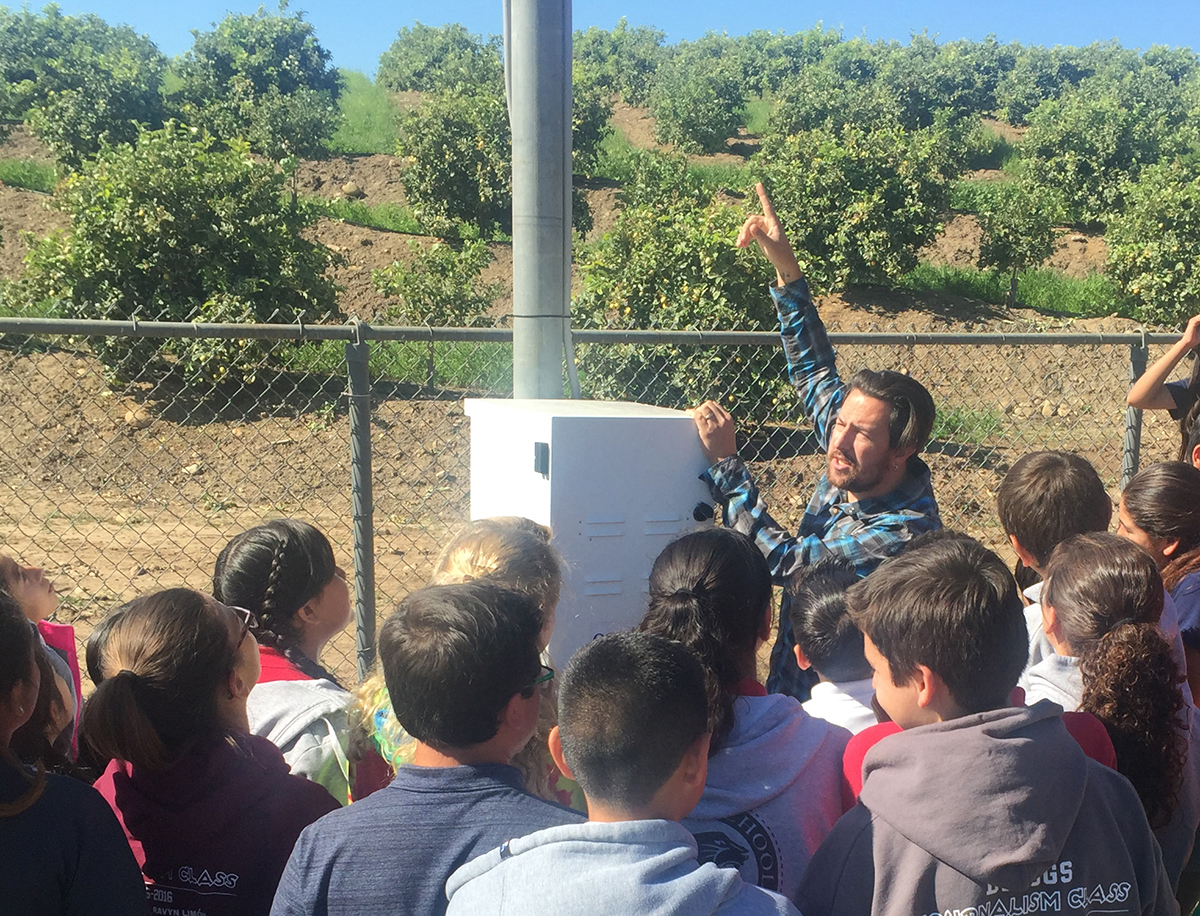Students learn firsthand, from UNAVCO field engineer Ryan Turner, how the GPS station at Olivelands Elementary School measures ground movement. The lesson includes discussing why monitoring plate movement is important for the students’ community. (Photo by Beth Bartel, UNAVCO)
—by Beth Bartel and Ryan Turner | January 2018
Every station needs a host, and many stations within the Plate Boundary Observatory (PBO) are hosted by schools. OVLS, at Olivelands Elementary School near Ventura, California, was installed in May 1999 as part of the Southern California Integrated GPS Network (SCIGN). The station was later adopted into the PBO, and has been maintained by UNAVCO as part of the network since 2006.
In addition to contributing to our understanding of the regional tectonics, OVLS exposes the students of Olivelands and neighboring schools to cutting-edge instrumentation and educational visits from UNAVCO staff. Students bussed over from nearby Briggs Middle School have learned how to read a GPS time series and how the motion of their station compares to that of their neighbors’—and why that matters. If nearby stations record differing motion, strain may be accumulating along faults and could possibly be released in future earthquakes.
Located on the Pacific Plate, OVLS clocks in at about 40 mm/yr, moving northwest relative to the bulk of the North American continent. This movement isn’t as fast as stations farther west on the Pacific Plate—station MIG1 in the nearby Channel Islands, for example, moves 47 mm/yr—but OVLS is in a complicated tectonic setting. It sits between the Oak Ridge Fault to the south and the Ventura Fault to the north, and the San Andreas Fault lies only about 60 km (37 miles) to the northeast.

Map: GPS stations of UNAVCO’s Plate Boundary Observatory (PBO) are marked by station names in green bubbles, with a magenta bubble for OVLS. Blue arrows indicate the direction/velocity each station is moving (the pink arrow in the bottom left is a scale bar of 25 mm/yr). The straight white line across the top right of the map is the San Andreas Fault (North America–Pacific Plate boundary). (Map by UNAVCO GPS Velocity Viewer)
Positioned in an area that is both tectonically active and densely populated, OVLS is critical to better understanding the local earthquake hazard. The station is not only surrounded by faults, it lies on the edge of the Ventura Basin, a deep, sediment-filled valley bordered on the sides by bedrock—the type of valley that can trap seismic waves with devastating effects. The difference in density between hard valley walls and a softer valley middle generally causes seismic waves to bounce back and forth between the walls like water sloshing in a bathtub, potentially generating more damage. Monitoring seismic activity with OVLS may give insight into how the area responds to seismic waves.
While UNAVCO provides updates and information about PBO station operations and maintenance to all the land owners that host stations, UNAVCO educational hosts provide a special opportunity to bring locally relevant science to many people at once. A total of 99 PBO stations are hosted by educational institutions, and UNAVCO staff have visited many host schools to meet with students ranging from fourth grade to community college. These visits bring geoscience into the classroom and engineering into the schoolyard, where students get a look into the equipment enclosure and discuss the challenges of keeping the stations running. Students also have opportunities to ask about potential career paths and the applications of geoscience and instrumentation. An additional 4 stations are hosted by informal education institutions, such as GPS station DSSC at Astrocamp in Idyllwild, California. Another 56 stations are located in national parks and national recreation areas.
Through interpretive signage, teaching and learning materials, and site visits, UNAVCO has an opportunity to directly contribute to the communities that make these projects possible.
Learn more about the movement of station OVLS.
Funding: NSF EAR 1261833





